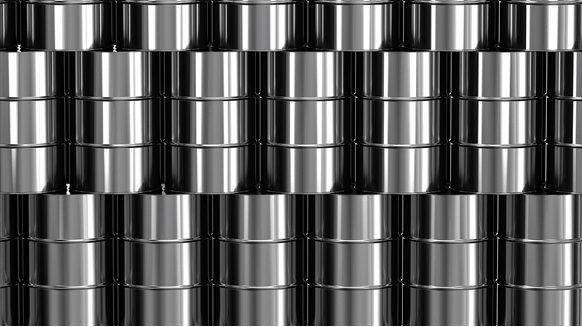
(Bloomberg) — The U.S. is poised to sell half of its emergency oil reserves to help pay its bills, something critics say defies the reason the stockpile was created decades ago as a hedge against supply disruptions.
The spending deal making its way through Congress calls for selling 100 million barrels of oil from the Strategic Petroleum Reserve by 2027. Combined with other sales approved last year, that would mean the volume of oil in the reserve would fall by 45 percent, to about 303 million barrels.
“This is the biggest non-emergency sale in American history,” said Kevin Book, managing director of ClearView Energy Partners in Washington. “This is nothing short of liquidation of a safety net.”
At today’s oil price of about $60 a barrel, a sale of 100 million barrels would raise $6 billion. But it’s impossible to determine exactly how much money the government would raise with the proposed sales because oil prices fluctuate wildly and the budget plan calls for the sales to take place between now and the fiscal year that ends Sept. 30, 2027.
The stockpile is kept inside a network of underground caverns and storage tanks along the U.S. Gulf Coast and has a capacity of 700 million barrels, making it the world’s largest supply of emergency crude oil. It was created in 1970s after the Arab oil embargo sent prices skyrocketing and forced Americans to ration gasoline, but has more recently become Congress’s go-to piggy bank, used to fund everything from roads to drugs to deficit reduction.
Past drawdowns approved by Congress have included 25 million barrels to pay for a medical research bill in 2015 and 66 million barrels to pay for transportation legislation in 2016. A draw down of 7 million barrels, worth an estimated $600 million, helped pay for a package of tax cuts passed by Congress in December.
Emergency uses have included sales after Operation Desert Storm in 1991, Hurricane Katrina in 2005, and an oil-supply disruption in Libya in 2011. It was also tapped last year after Hurricane Harvey left refiners in Texas and Louisiana unable to secure crude. “This is a good example of why we need an SPR,” Energy Secretary Rick Perry said at the time.
The last drawdown, a congressionally mandated sale in September 2017, fetched an average $47.45 a barrel, while the one before that drew $53.88 a barrel. Both sales yielded significantly more money than the government paid for the existing reserve oil, some of which is decades old. According to the Energy Department, the reserve’s inventory cost an average $29.70 a barrel.
With the U.S. awash in crude oil produced at home, some in Washington have questioned its usefulness, including President Donald Trump who proposed drawing down half of it in his budget request last year — a move the White House estimated would raise nearly $17 billion dollars.
“A smaller SPR is projected to be able continue to meet international obligations and emergency needs,” the White House said in its budget proposal.
The spending bill also reduces the reserve’s legal minimum inventory level to 350 million barrels, from 450 million. Since Congress began selling off the reserve to fill budget holes in 2017, it has not authorized the Energy Department to replace any of the crude.
Energy Undersecretary Mark Menezes said in an interview Thursday that the reserve was not intended to be “a government ATM.”
“My own view is that SPR was put in place as an energy security mechanism to ensure that we had supply,” Menezes said.
He’s not alone.
“Selling the SPR to cover non-energy budget expenses is deeply short-sighted and unwise,” said Bob McNally, president of consultant Rapidan Energy Group in Washington and a former senior energy official at the White House under Republican President George W. Bush. “In 1996 and 1997 we sold SPR barrels to pay for unrelated budget expenses and I was in the White House when we put those barrels back at higher prices starting about five years later, after 9/11.”
The pending budget bill also authorizes $350 million in sales to help pay for efforts to modernize the stockpile itself — a sign Congress doesn’t want to completely do away with the emergency oil supply.
“The SPR is only effective if it can get its petroleum to market quickly and efficiently in the event of a supply emergency,” said Robbie Diamond, president of Securing America’s Future Energy, a group aiming to pare U.S. dependence on oil. “Geopolitical risk is alive and well in the oil market, and the SPR is America’s only formal short-term line of defense against oil supply disruptions and price spikes.”
To contact the reporters on this story: Ari Natter in Washington at anatter5@bloomberg.net; Catherine Traywick in Washington at ctraywick@bloomberg.net. To contact the editors responsible for this story: Jon Morgan at jmorgan97@bloomberg.net; David Marino at dmarino4@bloomberg.net Justin Blum.




